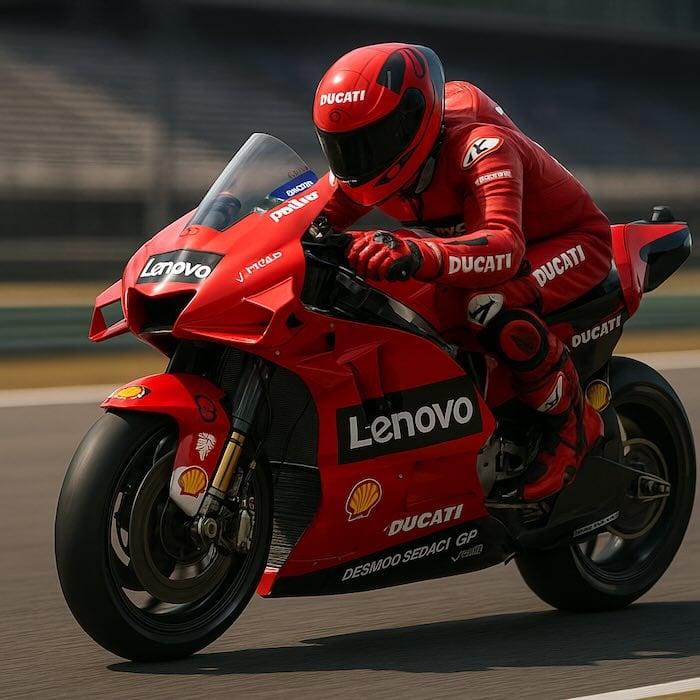A MotoGP bike costs between €2 million and €3 million.
This price includes research, design, materials, and maintenance throughout the racing season.
Each motorcycle is a custom-built prototype, not available for sale to the public, designed for ultimate performance and precision.

1. Why MotoGP bikes are so expensive
MotoGP machines use exclusive racing technology, far beyond commercial motorcycles.
Their 1000cc engines, seamless gearboxes, carbon brakes, and aerodynamic wings are developed specifically for competition.
Every component is made of lightweight, high-strength materials like titanium, carbon fiber, and magnesium.
Main cost factors:
- 1000cc racing engine (up to 18,000 rpm).
- Carbon brake system with cooling ducts.
- Dynamic electronic suspension.
- Advanced aerodynamics and sensors.
- Real-time telemetry and data collection.
2. Annual maintenance costs
Maintaining a MotoGP bike can cost over €1 million per season.
Teams replace engines multiple times, use dozens of sets of tires, and employ entire technical crews for each event.
Average season expenses:
- Engine development: €1,000,000
- Frame and materials: €250,000
- Electronics and sensors: €150,000
- Tires and brakes: €80,000
- Mechanics and logistics: €500,000
3. Manufacturer prices
| Manufacturer | Model | Estimated Value |
|---|---|---|
| Ducati | Desmosedici GP24 | €3,000,000 |
| Yamaha | YZR-M1 | €2,500,000 |
| Honda | RC213V | €2,800,000 |
| Aprilia | RS-GP | €2,400,000 |
| KTM | RC16 | €2,300,000 |
While true MotoGP bikes are not sold publicly, manufacturers release limited-edition models inspired by them, such as the Ducati Superleggera V4, priced around €100,000–€120,000.
4. What’s included in the cost
Teams also pay for:
- Pilot and engineering support.
- Data software access.
- Spare parts and upgrades.
- Factory technical assistance.
In total, a full MotoGP team can spend over €20 million per year on development, logistics, and racing operations.
A MotoGP bike costs up to €3 million, but it represents the peak of human engineering in two-wheel motorsport.
Each component is handcrafted for speed, safety, and control — and the lessons learned feed into future production motorcycles.
While owning one is impossible, you can rent a motorcycle in Lisbon and enjoy your own road adventure inspired by MotoGP’s spirit.